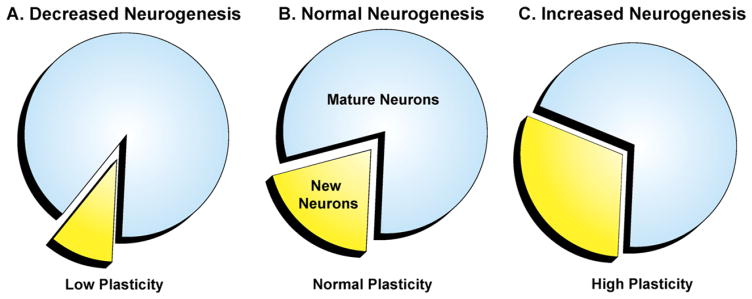Fig. 2.
Theory of hippocampal neurogenesis in learning and memory. In normal neurogenesis (B), it appears that new neurons are constantly replacing a small portion of the existing population at a basal rate without a significant overall increase in the number of total granule neurons in the DG over time. Under certain conditions that cause a decrease in neurogenesis (A), it is assumed that this rate of replacement is significantly decreased and that with stimulation, this rate of replacement increases (C). Compared with the mature neuron population, the proportion of new neurons may cause a shift into an elevated plastic state. An increase in neurogenesis, and thus an increase in plasticity, may cause improvement in learning and memory tasks. Therefore, conversely, blocking neurogenesis and decreasing the plasticity index may be the cause of the observable decline in performance with various learning- and memory-related tasks.

